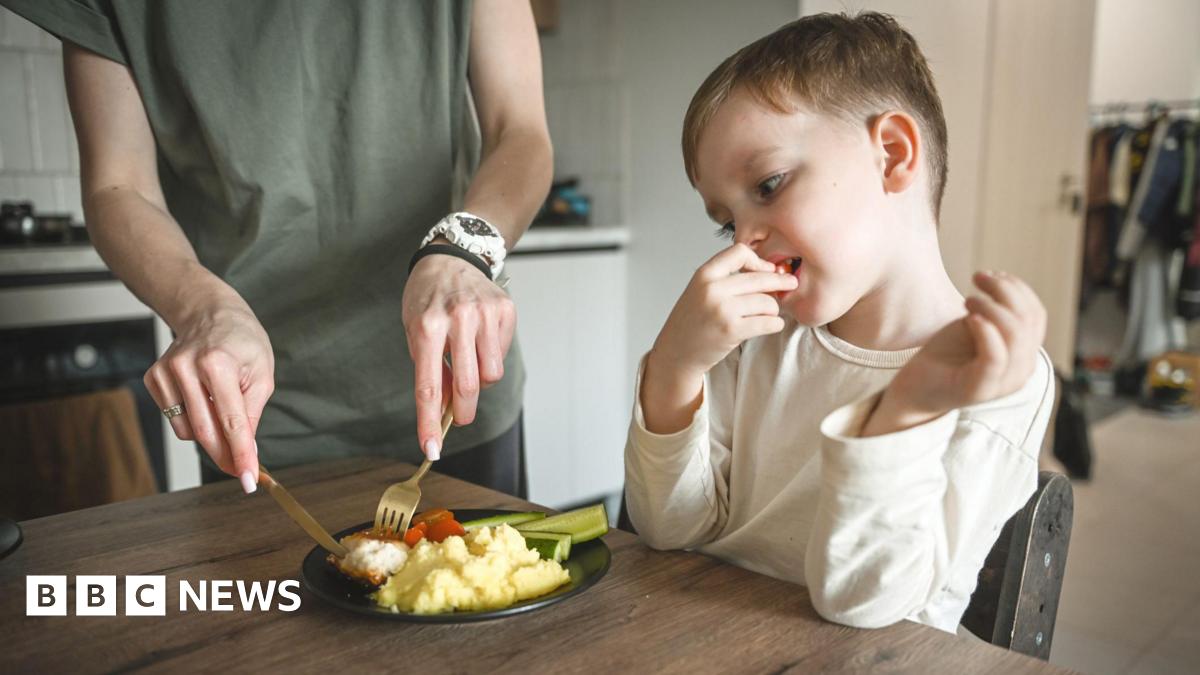Identifying Death Cap Mushrooms: Preventing Future Australian Tragedies

Welcome to your ultimate source for breaking news, trending updates, and in-depth stories from around the world. Whether it's politics, technology, entertainment, sports, or lifestyle, we bring you real-time updates that keep you informed and ahead of the curve.
Our team works tirelessly to ensure you never miss a moment. From the latest developments in global events to the most talked-about topics on social media, our news platform is designed to deliver accurate and timely information, all in one place.
Stay in the know and join thousands of readers who trust us for reliable, up-to-date content. Explore our expertly curated articles and dive deeper into the stories that matter to you. Visit Best Website now and be part of the conversation. Don't miss out on the headlines that shape our world!
Table of Contents
Identifying Death Cap Mushrooms: Preventing Future Australian Tragedies
Australia has tragically witnessed several deaths and serious illnesses linked to the consumption of Amanita phalloides, commonly known as the death cap mushroom. This highly poisonous fungus poses a significant threat, and understanding its characteristics is crucial to preventing future tragedies. This article provides vital information on identifying death cap mushrooms and emphasizes the importance of caution when foraging or consuming wild mushrooms.
What Makes Death Cap Mushrooms So Dangerous?
The death cap mushroom's toxicity stems from amatoxins, a group of potent liver and kidney toxins. Even a small amount ingested can lead to severe organ damage, potentially resulting in death. Symptoms often don't appear immediately, delaying treatment and worsening the prognosis. Early symptoms might include nausea, vomiting, and diarrhea, which can be mistaken for other gastrointestinal illnesses. However, these initial symptoms can subside before the more severe, life-threatening organ damage manifests.
Key Features for Identification:
Correct identification is paramount. Mistaking a death cap for an edible mushroom can have devastating consequences. Here's what to look for:
- Cap: The cap is typically pale green, olive-green, or yellowish-brown, often with a slightly sticky surface when moist. It's typically 5-15cm in diameter and initially rounded before flattening with age.
- Gills: The gills are white and free from the stem, meaning they don't attach to the stem. This is a crucial distinguishing feature.
- Stem: The stem is white, often with a noticeable bulbous base and a skirt-like ring (annulus) around the upper stem.
- Volva: A crucial identifier is the volva, a cup-like structure at the base of the stem, often partially buried in the ground. This is the remnants of the protective layer surrounding the young mushroom.
- Spore Print: A spore print (made by placing the cap gill-side down on paper) will reveal white spores, another important identifying feature.
Commonly Confused Species:
Death caps are frequently confused with several edible mushrooms, particularly some varieties of paddy straw mushrooms and other similar-looking fungi. This highlights the danger of relying solely on visual identification without expert knowledge.
Never Eat a Wild Mushroom Unless 100% Certain of Its Identity:
This cannot be stressed enough. Do not rely on online identification tools or books alone. Mushroom identification is complex, and even experienced foragers can make mistakes.
What to Do if You Suspect Mushroom Poisoning:
If you suspect someone has ingested a death cap or any other poisonous mushroom, seek immediate medical attention. Call emergency services (000 in Australia) and take a sample of the mushroom (if possible) for identification purposes. Time is critical in treating mushroom poisoning.
Educational Resources and Prevention:
Several organizations offer excellent resources on mushroom identification and safety. These include the relevant state-based mycological societies and local mushroom clubs. Participation in guided mushroom foraging walks led by experienced mycologists is highly recommended for anyone interested in learning more. Remember, safety should always be your top priority.
Conclusion:
The tragic consequences of death cap mushroom ingestion underscore the need for increased public awareness and careful mushroom identification. By understanding the key characteristics and taking necessary precautions, we can collectively work towards preventing future tragedies in Australia. Remember, when in doubt, throw it out!

Thank you for visiting our website, your trusted source for the latest updates and in-depth coverage on Identifying Death Cap Mushrooms: Preventing Future Australian Tragedies. We're committed to keeping you informed with timely and accurate information to meet your curiosity and needs.
If you have any questions, suggestions, or feedback, we'd love to hear from you. Your insights are valuable to us and help us improve to serve you better. Feel free to reach out through our contact page.
Don't forget to bookmark our website and check back regularly for the latest headlines and trending topics. See you next time, and thank you for being part of our growing community!
Featured Posts
-
 Boston Red Sox Rookie Sparks Controversy With Yankees Diss
Jun 08, 2025
Boston Red Sox Rookie Sparks Controversy With Yankees Diss
Jun 08, 2025 -
 Nadiya Hussains Cookery Show Renewed Or Cancelled By Bbc
Jun 08, 2025
Nadiya Hussains Cookery Show Renewed Or Cancelled By Bbc
Jun 08, 2025 -
 Donde Ver El Partido Andorra Vs Inglaterra Online Y En Tv
Jun 08, 2025
Donde Ver El Partido Andorra Vs Inglaterra Online Y En Tv
Jun 08, 2025 -
 England Womens Football Post Retirement Rebuild Shows Promise Under Wiegman
Jun 08, 2025
England Womens Football Post Retirement Rebuild Shows Promise Under Wiegman
Jun 08, 2025 -
 Ten Seasons Done Nfls Chris Conley Announces Retirement
Jun 08, 2025
Ten Seasons Done Nfls Chris Conley Announces Retirement
Jun 08, 2025
 Yankees Shortstop Situation Volpes Performance Under Daily Scrutiny
Yankees Shortstop Situation Volpes Performance Under Daily Scrutiny
 Democrats Fail To Block Gop Nominee Push Senate Rules Altered
Democrats Fail To Block Gop Nominee Push Senate Rules Altered
 Mealtime Struggles Expert Tips For Dealing With Fussy Eaters
Mealtime Struggles Expert Tips For Dealing With Fussy Eaters
